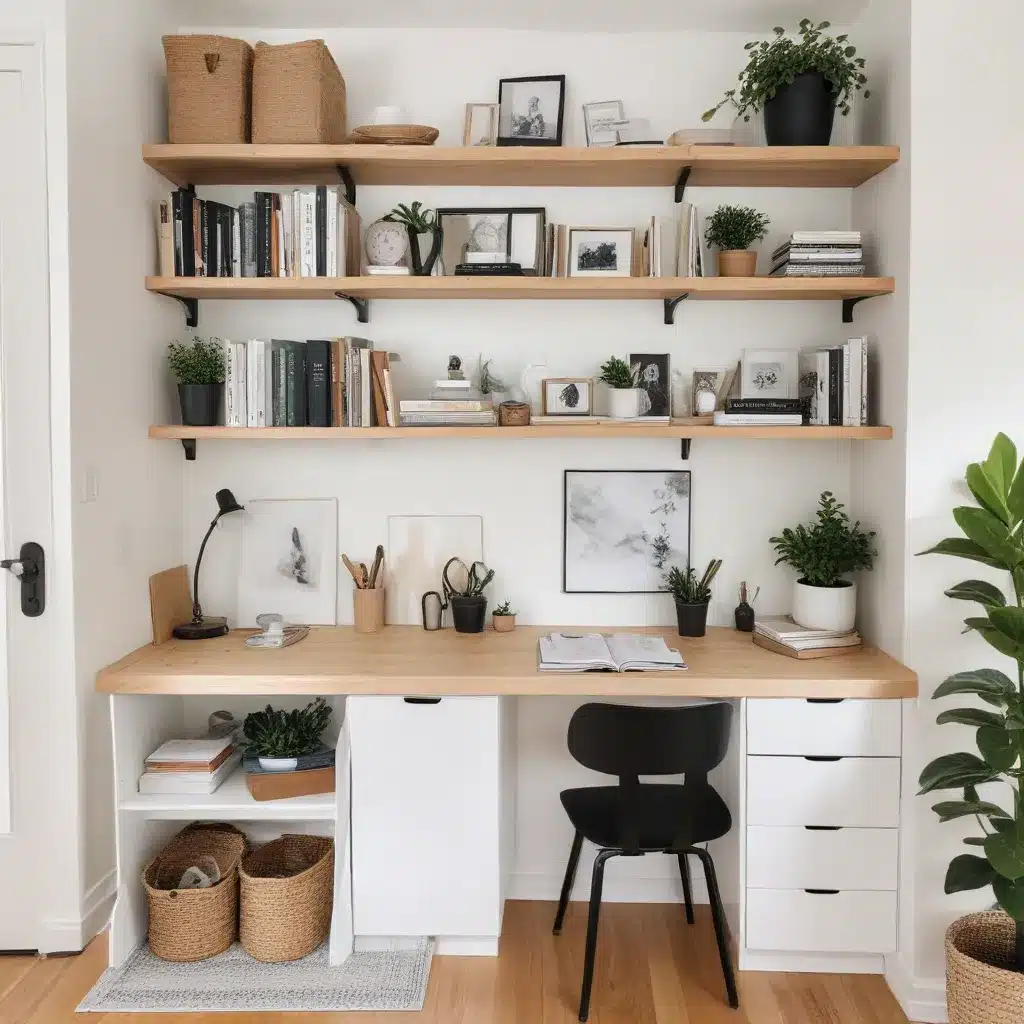
Minimizing clutter is essential for creating a peaceful, serene living environment – especially in small spaces. As an experienced home improvement consultant, I’ve seen how clearing the physical and mental weight of excess possessions can transform a room from chaotic to calming. Whether you’re working with a modest studio apartment or a cozy family home, these decluttering strategies can help you cultivate a tranquil, aesthetic-focused space.
Identifying Unnecessary Items
The first step in decluttering is to critically examine each item in your home and ask tough questions. Does this object serve an essential purpose? Does it spark joy, or is it just taking up valuable square footage? Be ruthless in cutting down to the bare essentials.
As an extreme minimalist, I’ve found it helpful to set strict limits on the number of belongings I allow in each category – for example, no more than 10 pairs of shoes, 5 pots and pans, or 20 decor items. This forces you to focus on versatile, multifunctional pieces that truly meet your needs.
When it comes to sentimental items, the key is to keep only what represents the memory, not every single memento. Pare down collections of cards, ticket stubs, or childhood trinkets to your most cherished pieces. Letting go of the rest can be emotionally freeing, making space for the life you have now.
Efficient Storage Solutions
Once you’ve whittled down your possessions, smart storage becomes crucial in a small space. Utilize vertical space with shelves, cubbies, and modular organizers. Label clear bins and baskets to keep like items together. Employ space-saving techniques like vacuum storage bags for bulky off-season items.
The goal is to ensure every object has a designated, organized home. No more stray items cluttering countertops or floors. This not only reduces visual noise but also makes it easy to maintain a clutter-free environment.
Choosing Functional Decor
When it comes to decorating a small space, less is often more. Embrace the beauty of negative space and clean, uncluttered surfaces. Opt for a few well-chosen pieces of art, plants, or sentimental decor rather than filling every nook and cranny.
Seek out multipurpose furniture and decor that serve more than one function. For example, an ottoman with hidden storage, a coffee table with built-in shelves, or a side table that also acts as a plant stand. These versatile pieces maximize your square footage while minimizing clutter.
Creating a Serene Small-Space Atmosphere
Maximizing Natural Light
One of the quickest ways to make a small space feel airy and open is to maximize natural light. Position furniture to allow sunlight to flow freely, and consider window treatments that diffuse light rather than block it. Mirrors strategically placed can also enhance the feeling of brightness and spaciousness.
Utilizing Multipurpose Furniture
In a small room, every inch counts. Look for dual-purpose furniture that serves more than one function, like a daybed that also provides storage, or a console table that doubles as a desk. Multifunctional pieces help you avoid the trap of overcrowding.
Incorporating Calming Colors
When it comes to palette, stick to a soothing, cohesive color scheme. Soft neutral tones, muted pastels, and nature-inspired hues can create a sense of serenity. Avoid vibrant, high-contrast colors that can feel visually overwhelming in a compact area.
Decluttering Strategies for Different Areas
Decluttering the Kitchen
The kitchen is often a hotspot for clutter, with gadgets, utensils, and pantry items accumulating over time. Start by grouping items into “zones” based on how you use them – for example, a coffee station, a baking area, and a prep zone. Purge anything you haven’t used in the last year, and store the essentials in an organized, accessible way.
Decluttering the Bedroom
When it comes to the bedroom, the key is to maintain a capsule wardrobe – a small, versatile collection of high-quality, mix-and-match clothing. Apply the “one-year rule”: if you haven’t worn an item in the past 12 months, it’s likely time to donate or repurpose it. Streamline your belongings to create a peaceful, uncluttered sanctuary.
Decluttering the Bathroom
In the bathroom, focus on paring down toiletries, medications, and linens. Toss expired or unused products, and store the essentials in clearly labeled bins or baskets. Adopt a “one-in, one-out” policy to prevent future clutter buildup.
Maintaining a Minimalist Lifestyle
Developing a Decluttering Routine
Decluttering isn’t a one-time event – it’s an ongoing process. Set aside regular intervals, whether weekly, monthly, or seasonally, to review your belongings and let go of what you no longer need. This helps you stay on top of clutter before it accumulates.
Preventing Future Clutter Accumulation
To keep your space serene, be mindful of what you bring in. Implement a “one-in, one-out” rule – for every new item you acquire, something else must go. This encourages you to carefully consider each purchase and prevents unnecessary accumulation.
Embracing a Mindful Approach
Ultimately, decluttering is not just about tidying up; it’s about cultivating a mindful relationship with your possessions. When you see your belongings as temporary helpers rather than permanent fixtures, it becomes easier to let go of what no longer serves you. This impermanent mindset can be incredibly liberating, allowing you to truly enjoy the present moment.
By implementing these decluttering strategies, you can transform your small space into a tranquil, visually cohesive oasis. Remember, the goal is not to achieve a perfect, minimalist aesthetic, but to create a home that feels calm, functional, and aligned with your lifestyle. The journey of decluttering may be challenging at times, but the sense of freedom and serenity it brings is well worth the effort. Happy decluttering!
If you’re looking for more inspiration, be sure to check out Reluctant Renovator, a valuable resource for all your home improvement needs, from budget-friendly projects to family-friendly designs.



